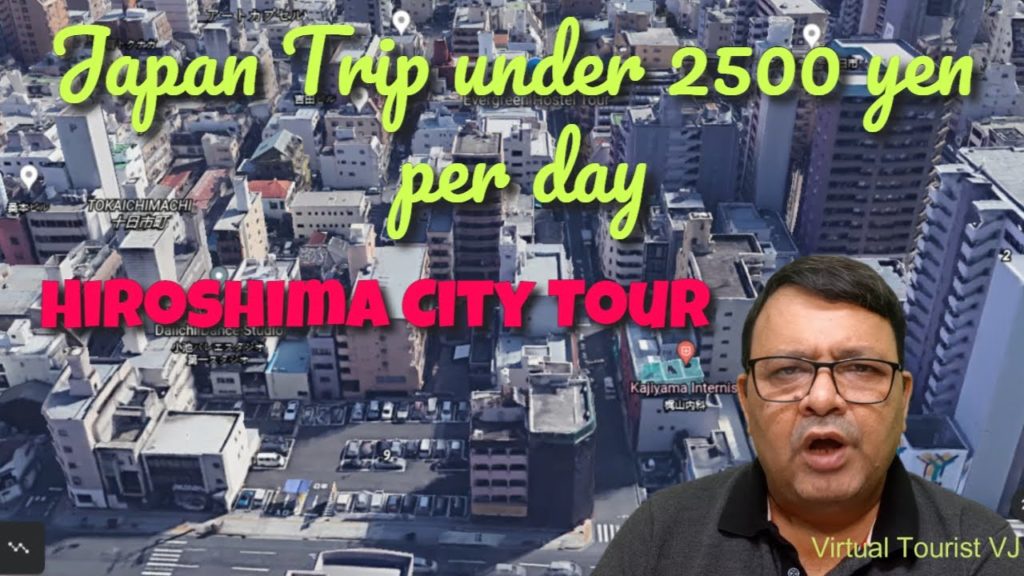Japan trip episode no 6. Hiroshima city tour under 2500 yen per day, including main sight seeing, boat tour, island tour, Miyajima Island explained. Itsukishima Shrine, Buddhist temples and Shinto temples. A – Bomb Dome and Peace Memorial Park included. With night stay and sight seeing all under 2500 yen. How to make it happen, see in this virtual motor bike tour with Virtual Tourist VJ. Hostel Tour in Hiroshima included for your information. Entire Japan tour my idea was to keep the cost under 2500 yen per day.
The Hiroshima Peace Memorial (広島平和記念碑, Hiroshima Heiwa Kinenhi), originally the Hiroshima Prefectural Industrial Promotion Hall, and now commonly called the Genbaku Dome, A-Bomb Dome (原爆ドーム, Genbaku Dōmu), is part of the Hiroshima Peace Memorial Park in Hiroshima, Japan and was designated a UNESCO World Heritage Site in 1996. The ruin of the hall serves as a memorial to the over 140,000[2] people who were killed in the atomic bombing of Hiroshima on 6 August 1945.
Itsukushima (厳島) is an island in the western part of the Inland Sea of Japan, located in the northwest of Hiroshima Bay. It is popularly known as Miyajima (宮島), which in Japanese means “Shrine Island”. The island is one of Hayashi Gahō’s Three Views of Japan specified in 1643. Itsukushima is part of the city of Hatsukaichi in Hiroshima Prefecture. The island was part of the former town of Miyajima before the 2005 merger with Hatsukaichi.
Itsukushima is famous for the Itsukushima Shrine, a UNESCO World Heritage Site. According to records, the shrine was established in the time of Empress Suiko. The warrior-courtier Taira no Kiyomori gave the shrine its present form. In 1555, Mōri Motonari defeated Sue Harukata at the Battle of Miyajima. Toyotomi Hideyoshi built a large building, the Senjō-kaku, on a hill above the shrine.
Itsukushima has a number of temples, including Toyokuni Shrine with a five-storied pagoda, and Daiganji Temple – one of the three most famous Benzaiten temples of Japan. The island is also famous for its upper hill side cherry blossoms and maple leaf autumn foliage.
The island of Itsukushima, including the waters around it (part of Seto Inland Sea), lies within Setonaikai National Park. This sea is affected by strong tides. At low tide, the bottom of the sea is exposed past the island’s torii. At high tide, the sea covers all the previously exposed seabed mud and fills areas underneath the shrine boardwalk.
Hiroshima (広島市, Hiroshima-shi, /ˌhɪroʊˈʃiːmə/, also UK: /hɪˈrɒʃɪmə/, US: /hɪˈroʊʃɪmə/, Japanese: [çiɾoɕima]) is the capital of Hiroshima Prefecture in Japan. As of June 1, 2019, the city had an estimated population of 1,199,391. The gross domestic product (GDP) in Greater Hiroshima, Hiroshima Urban Employment Area, was US$61.3 billion as of 2010. Kazumi Matsui has been the city’s mayor since April 2011.
Hiroshima was founded in 1598 as a castle town on the Ōta River delta. Following the Meiji Restoration in 1868, Hiroshima rapidly transformed into a major urban center and industrial hub. In 1889, Hiroshima officially gained city status. The city was a center of military activities during the imperial era, playing significant roles such as in the First Sino-Japanese War, the Russo-Japanese War, and the two world wars.
Hiroshima was the first city targeted by a nuclear weapon. This occurred on August 6, 1945 at 8:15 a.m., when the United States Army Air Forces (USAAF) dropped the atomic bomb “Little Boy” on the city. Most of the city was destroyed, and by the end of the year 90,000–166,000 had died as a result of the blast and its effects. The Hiroshima Peace Memorial (a UNESCO World Heritage Site) serves as a memorial of the bombing.
Since being rebuilt after the war, Hiroshima has become the largest city in the Chūgoku region of western Honshu, the largest island of Japan.
I also offer online courses on UDEMY, related to exports mastery. To explore latest courses including on how to do business with Japan visit


AloJapan.com